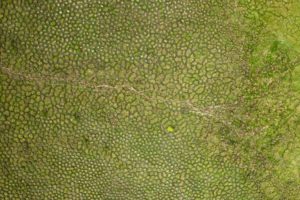
What is your Profession?
I am a postdoctoral researcher at the Bren School of Environmental Science & Management at the University of California, Santa Barbara.
What type of research are you involved in?
I am deeply interested by landscapes featuring regular patterns. Regularly spaced clumps of grasses or trees, stones or earth mounds are widely distributed across the globe. My research in ecology specifically focuses on earth mound patterns.
The excitement I felt 10 years ago when I first saw these mounds never went away.
I am working as part of a team (led by Professor Doyle McKey, Centre d’Ecologie Fonctionnelle et Evolutive, Montpellier, France) that comprises ecologists, soil scientists and archaeobotanists. Collaboratively, we aim at understanding the processes (biological, physical or the interaction of the two) that generate earth mounds and create regularity, and the environmental factors that may affect the size and shape of mounds.
As a field ecologist, I study how the presence of mounds affects the spatial distribution of biodiversity, such as plants and soil organisms (among them social insects and earthworms). I also combine fieldwork with remote sensing to ask why earth mounds emerge in some places and not in others, and how do they change—grow or die—over time?
Why did you become interested in this area of research?
My journey with earth-mound landscapes started during fieldwork for my Master’s degree in French Guianan coastal savannas in 2006. Walking among the mounds and watching them from the air just blew my mind.
At that time, we did not know much about these mounds. Archaeologists and ecologists were actively debating their origin: the first thought they were human-made for agricultural purposes while the second thought they were made by termites or earthworms.
The sort of mystery around the origin of the mounds, the fact that we did not know anything about their ecology, was really exciting. I dedicated part of my Master and all my PhD study to these landscapes. The excitement I felt 10 years ago when I first saw these mounds never went away.
How did you become interested in photography?
Aerial photographs are a very interesting support for scientists. Aerial photography provides a totally new perspective on a landscape. It basically widens our point of view. While learning how to take aerial photos with a drone was a lot of fun in itself, I also learned how to use these images to map the mounds, and statistically analyze their spatial patterns in terms of regularity, size and orientation across large areas.
Photography is also a powerful support for communicating our research – aerial pictures of our landscape captivate the public.
Where and how was this photo taken?
I took this photo in Colombia using a remote controlled drone called PIXY (©IRD).
Why were you there at the time?
I went to Colombia, more specifically to a wide area of savanna grassland called Llanos del Orinoco, to study mysterious earth-mound landscapes called “surales”. These savannas are flooded during the rainy season and only the top of the mounds emerge above water level.
Can you explain a bit more about the image?
The photo shows hundreds of earth mounds that are are created by a large, yet unknown, species of earthworm. Mounds are initiated when large earthworms feed in shallowly flooded soils, depositing casts (i.e. earthworm feces) that form ‘towers’ above water level. Using permanent galleries in the soil, each earthworm returns repeatedly to the same spot to deposit casts and to respire.
The fact that we did not know anything about their ecology was really exciting.
Over time, the tower grows and becomes a mound that is colonized by other organisms that need well-drained soil to survive – this includes other species of earthworms, some plants, ants and termites. In the photo, we can see that some mounds are well-defined small round mounds of about 1 meter in diameter. We can also see in the center of the image that small mounds have coalesced/merged to form larger ones with a more labyrinth pattern. On the right of the photo we can barely see any mounds.
What about this scene particularly interested you?
This scene shows very well that, at spatial scales of a couple of meters, the shape and pattern of mounds can change. These changes might be underlined by small-scale variation in environmental conditions related to the topography and thus the depth of the water level and duration of flooding during the rainy season. Although we don’t yet know how variation in the environment can affect the mounding behavior of the earthworm, this picture provides us with a support to build our hypotheses.
Comments